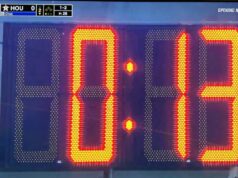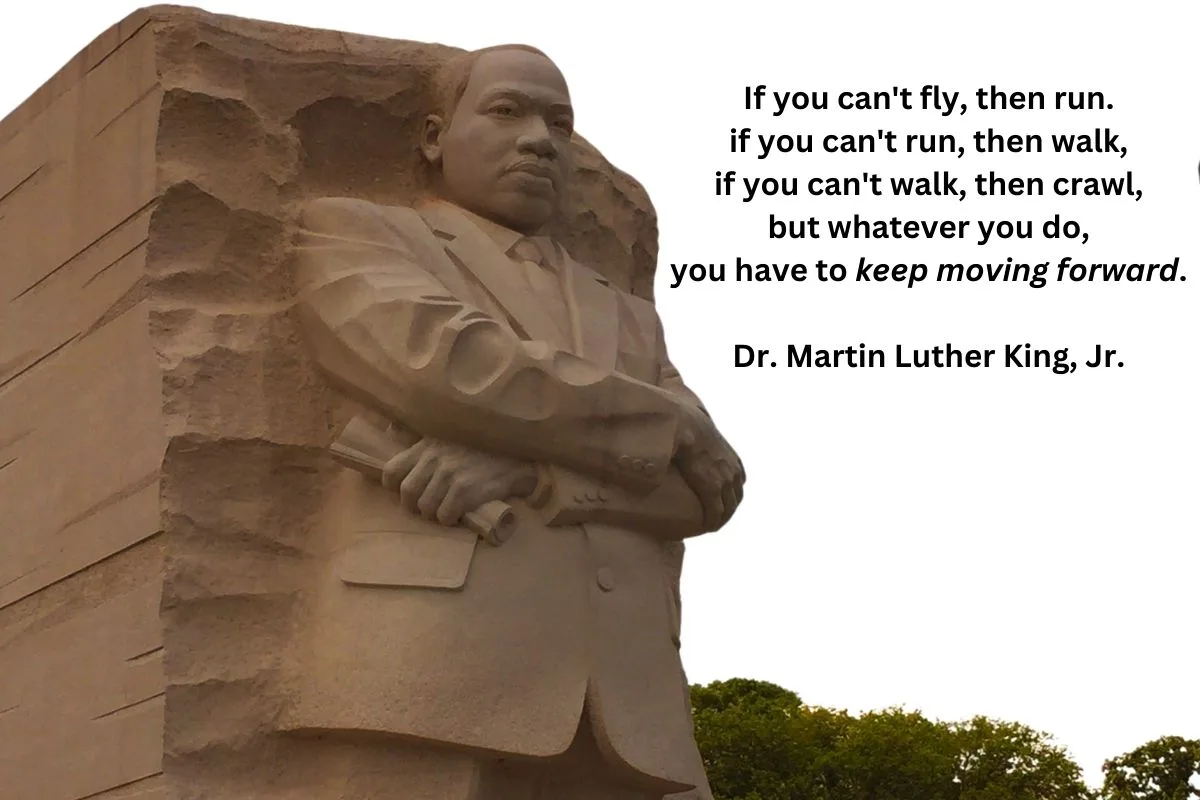 Mark's note: The vacation guest posts continue with a piece by a long-time friend of my blog, Matt Wrye. He's a frequent commenter and wrote a post last year called “Clear and Relevant Metrics.” He recently started his own blog called “Beyond Lean.“
Mark's note: The vacation guest posts continue with a piece by a long-time friend of my blog, Matt Wrye. He's a frequent commenter and wrote a post last year called “Clear and Relevant Metrics.” He recently started his own blog called “Beyond Lean.“
Thanks to Matt and all of my guest bloggers during my vacation. I'll be back July 1st or a little sooner. Thanks for reading and visiting the blog. You can also poke around the archives by using the search box in the right column or by clicking on “tags” at the bottom of the posts or the “tag cloud” at the bottom of each page.
Stop Improving and Start Eliminating
I know the title will probably send a lot of lean thinkers into cardiac arrest. Typically, we talk about how companies need to stop eliminating people and start using them to improve the process. I want to take a look at this phrase from a different lens. I want to look at it from the continuous improvement process side. Traditionally, companies have looked at driving improvement by demanding people work harder or by making the value added steps faster. As lean thinkers, we want organizations to look at all the waste that is surrounding the process and eliminate it.
A typical process is comprised of several activities, some of which are value added and many that are not value added. A color coded gant chart might look something like the one below, where the orange blocks are the value added activities and grey blocks are the non-value added activities.
In my experience, the above chart represents the balance of value added to non-value activities most typically seen. For now, lets say that split is 20% of the overall process time is value added and 80% of the process time is non-value added. If I were to group all the value added activities to one side and the non-value added activities to the other side, I would get a chart like the one below.
Traditionally, continuous improvement has been centered on improving the value added steps. We are asked to improve these steps by 50%. For years, we have been driving to make this value added work as efficient as possible through the automation of work, speeding up presses and machines, and upgrading equipment. We have gotten so good at this; the next steps are to buy untested or overcomplicated technology or to ask our employees to work harder and faster. The first is can be very capital intensive while the second is free. Asking employees to work harder around processes with a lot of waste is not showing them the respect they deserve. As an organization we are directly violating the respect of people pillar of lean and in the end, we might only get a 10% overall process improvement. See chart below.
 Lean looks at continuous improvement and the respect for people as equal and balanced parts of the equation. In doing so, this approach flips the traditional approach of continuous improvement and asks the question, “How can I eliminate the waste in the process?” Again, we are asked for a 50% improvement on these activities. By eliminating waste, instead of speeding up value added activities, we know have a 40% overall process improvement. See chart below.
Lean looks at continuous improvement and the respect for people as equal and balanced parts of the equation. In doing so, this approach flips the traditional approach of continuous improvement and asks the question, “How can I eliminate the waste in the process?” Again, we are asked for a 50% improvement on these activities. By eliminating waste, instead of speeding up value added activities, we know have a 40% overall process improvement. See chart below.
Reducing the waste also shows a respect for the people involved in the work. The waste is what causes the headaches for employees during the day. It isn't the value added activities like taking care of a patient or running a press. It is looking for tools and instruments needed, refilling out paperwork, or any other non-value added activity that distracts the employee from doing the value added work. When you involve the employee in eliminating these types of headaches, you are getting their engagement in the improvement process, making their job easier and less stressful and gaining a larger overall process improvement. It shows respect for the person doing the work as well as for the stakeholders that need improvements to maintain the appropriate cost levels.
Lean is not a zero sum equation where someone wins and someone loses. It is about everyone getting a positive sum on both sides. So we should stop improving value added activities and start eliminating waste.
About Matt Wrye: By integrating his 10+ years of lean implementation and problem solving experience, Matt is able to draw on his successes and failures to tackle new challenges by presenting fresh perspectives and results-driven solutions. Through his exposure to multiple business operation facets in divergent industries that include aluminum, electronics, auto, HVAC, and consumer goods, he is able to provide real-life lean solutions to everyday business challenges.
His cornerstone belief is that all levels of the business unit should be educated on lean thinking and principles. To this point, Matt diligently challenges his own lean knowledge while working with all business levels ranging from human resources, accounting and the manufacturing floor to senior managers, executives and presidents. By adhering to this continuous learning philosophy, Matt is able to focus his lean efforts to provide continuous improvement.
Matt has a Bachelor of Science degree from Purdue University in Industrial Engineering. Among his other accomplishments, he is a certified Shainin Red X Journeyman and is certified in Statistical analysis and Kepner-Tregoe problem solving methodology. He is proud to have single-handedly started the Tyler Lean Consortium in Tyler, TX.
What do you think? Please scroll down (or click) to post a comment. Or please share the post with your thoughts on LinkedIn – and follow me or connect with me there.
Did you like this post? Make sure you don't miss a post or podcast — Subscribe to get notified about posts via email daily or weekly.
Check out my latest book, The Mistakes That Make Us: Cultivating a Culture of Learning and Innovation:













Hi Matt,
Very nice post! …And a great reminder.
It makes me think of the TWI Job Methods program (JM) process which directs practitioners, when developing the new method, to eliminate unnecessary details, combine details where practical, rearrange for better sequence, and simplify all necessary details. I believe “eliminate” is listed first for a reason.
As I often suggest to folks, “the best work content is no work content.” Initially, I get a, “what are you talking about?” look, but people eventually figure it out. The biggest opportunity, at least at first, is getting rid of the big muda…with a chainsaw. Trying to finesse the “value-added” stuff (less chainsaw, more scalpel) comes later. This is not dissimilar to the notion of attacking foremost the “white spaces” when conducting value stream analysis and creating value stream improvement plans.
Matt
Thank you for pointing out the importance of the people that actually do the value added work. i find all the present day focus on trying to push production staff and equipment harder almost a total waste of effort, as the bulk of most costs is actually in needless overhead. Properly trained production staff will always try to do better on their own if you show that you are working to eliminate the overhead waste around them. If organizations ignore the overhead waste why would anyone actually producing value care to help the organization, they know what percentage of the cost they are in reality.
If we tackle all the none production waste first, it will motivate everyone to do their best.
Nicely put. I really like the simple, powerful, graphic display.
We’ve turned our attention from the shop floor to our information flow (order to invoice) recently, so I’m working with some new “students” and the lesson you present here was at the core of our future state design. While there were plenty of ideas for improving “value added” steps (as we stretch the definition in this context…) – automation and new technology, for example – we set out first to eliminate waste with no new technology, and boy did it open some eyes.
While I promised the team we won’t overlook all the ideas for improvement inside the value added work, they are pretty excited about taking out the masses of over-processing, transportation, storage, waiting, rework, etc., first. Folks are practically giddy seeing how much time they will be getting back!
In my view this is one of the core differences (if not THE core difference) between lean and most of the other “quality” movements of past and present, and a lesson that bears frequent repetition. Waste sucks up time and resources and stands between us and our customers in big ugly piles that prevent us from seeing and addressing their needs. It’s the right place to start.
Thanks for your comments, everyone. I completely agree. When I am talking about waste and improvement, I go right to the graphic and explanation above. I draw it out on a chart pad or white board. As soon as the employees realize I am talking about getting rid of their headaches and not working faster, I can see the tension just release from the room.
Good piece. In my work I always find if you improve the process by getting rid of waste, the staff always works smoother and steadier versus being frantic and stressed and always trying to overcome obstacles that never get removed — thus the work in the end is really easier and far more satisfying, which should be an objective. Plus safety always gets better. And people don’t lose jobs with the waste gone and the percent of time spent on value-adding enhanced, as they can then assume some logical, added tasks with the eliminated waste — such as doing final packaging versus spending the same time, energy to drop the finished goods in a tote that is moved elsewhere for someone else to do pick it up again and drop it into the final packaging. Then they have full ownership and responsibility as well as the product is next seen by the customer. And because quality improves, delivery gets better, and the business becomes more competitive they can benefit financially with a sharing in the gains they have helped make possible. And that also means more business which in the end means more business.
And it’s particularly irksome when managements don’t first invest in US plants and improving the process but just run offshore saying labor costs are the problem.
Anyway, good job on the piece.